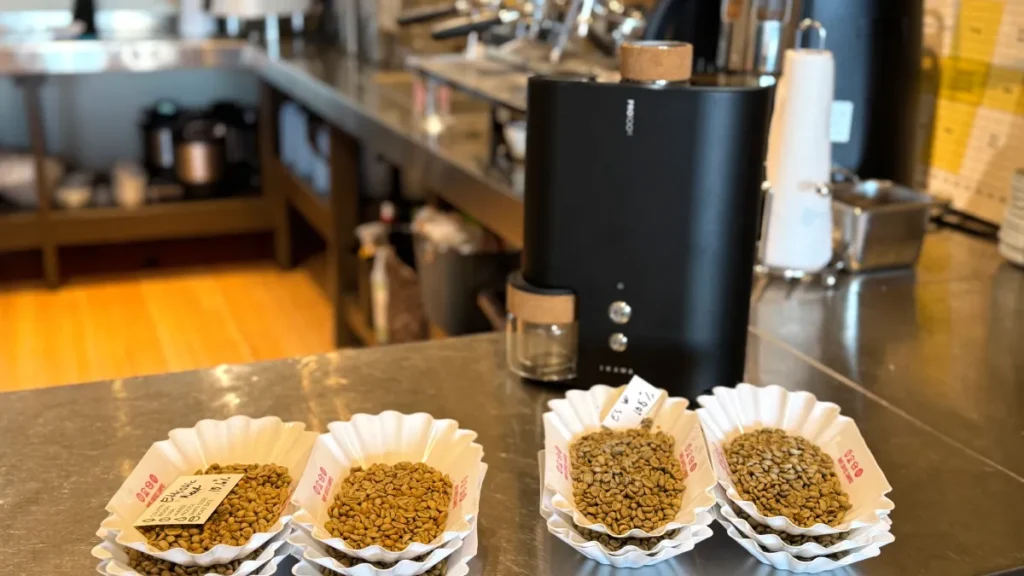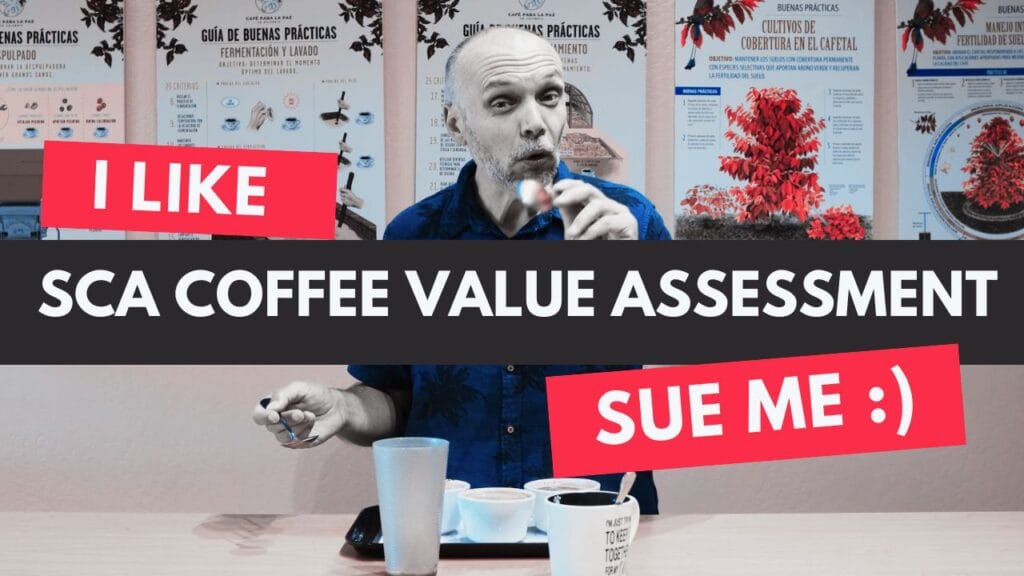#46 What is the Ideal Size of a Coffee Roaster, Can You Save Past Crop Coffee, Drum Speed, Mimicking Espresso and more …

In this podcast, we will revisit the question of what is the ideal size of the roaster one should buy for their coffee roasting startup. You can find my old article here:
Buying a Coffee Roaster? Here are few considerations so you do not get burned.
We also got a few questions from you! Thanks! We feel your questions make this podcast more dynamic. Keep them coming, please.
1
Love the podcast!
I have a question about adjusting a roasting profile as a coffee ages. We’ve had a few coffees that started out wonderful and juicy, but as the enter or near the ‘past crop’ zone start to taste woody, papery, or sometimes underdeveloped, any advice on how to adjust our profiles?
thanks
Matt, Matthew Schodorf
Founder / Roaster / Café de Leche
—————————————————————————————-
2
I do have a question, and I shall take your roasting courses if you give the answer that cures the issue we are facing.
We do roast green coffee beans from China and from Indonesia, of course, each single source is roasted separately. We do not roast blended green beans.
The issue we face is that we always get color inconsistency in the roasted coffee within one batch (uneven coffee color for the same roasted batch).
Our roaster is 3 kg (max load for each batch is 2.500 kg of green beans).
We pre-heat up to 150 Celsius some times 170 Celsius (experimenting).
This is always the case with Medium Dark roast (we drop down the roasted batch immediately after quietness of 1st crack), and not with the dark roast
Your help in this is highly appreciated.
Best regards
Samir H Yousef
3
Hi, this is Candy from Southeastern Roastery. I’m opening a cafe this fall 2019 in Riverdale Park, MD and already have a few wholesale clients with more interested.
I am running into an issue regularly where potential clients want a tasting, have equipment but don’t have it connected (espresso machines, grinders, etc). My first question is what are the best portable equipment for tastings as I’m getting my shop built out?
My second question is how to best mimic and espresso with portable equipment? I find it hard with a French Press, water hot pot and portable grinder.
Thanks,
Candy Schibli
———————————————————————————————–
4
- If I wanted to donate a portion of my coffee business profits to coffee producers in need, how would I do it?
- Seasonality: I need a guide to determining when I should buy a certain country’s coffee. I want to buy at the beginning or middle of the season & not at the end
Dan Gorman, Punto Fino Coffee, Fairfax
5
When is the best time to adjust drum speed? Drying phase Maillard, after first crack? I’ve read what Scott Rao has to say about rpm for specific roasters depending on the roaster size and would agree with him for the most part. What I can’t seem to understand is at what point do you adjust drum speed when trying to create the best curve/profile for a specialty coffee?!
Too slow will cause more conduction heat and scorched coffee
Appropriate speed will give you a good well-rounded coffee if the roaster is skilled enough.
Too fast will also give you scorched coffee since beans aren’t flowing in the drum properly
I’m trying to think outside the box and figure out how to manipulate drum speed to create an outstanding cup of coffee. I understand there are many factors involved such as atmospheric pressure, ambient temperature, humidity.. etc but I truly believe there has to be a way to slow down Maillard with drum speed to fully develops sugars and achieve a better end result.. questions is how?
Rudy Altamirano, LuwakCafe, Tijuana Mexico
In this episode, we drunk a skin contact Marsanne from my own portfolio noso2.com.
If you are interested to follow our wine adventures follow us on Instagram @petnat_ca



Thought your responses on finding profitable uses for coffee that falls somewhere “beyond its prime” and “making a dead cat alive again zombie coffee” were great.
In my earlier phases of exploring this amazing world of coffee I got excited and overbought… WAY overbought. thus I have some genuine antique coffees. No funds to buy fresh crop these days, so I’ve learned to make the ones I have taste good. Your recommendations to roast more slowly, essentially, is just about what I’ve come round to doing. Tried most everything, and that provides the best results. I know what these coffees tasted like when fresh. No, I can never pull out all the vibrancy they used to have. But I regularly roast these antiques to their best advantage and serve them, at times to working coffee professionals, and most times no one EVER realises these coffees are, in come cases, five or more years past crop. Lowering the rate of rise between turnaround and first craxk onset seems to be critical. Even in Grainpro, there is signficant mpisture loss (though I’ve not tracked this metric) and thus the energy application MUST be reduced to maintain even the earlier profiles I’d developed for each one… and reducing the heat application even further to slow the rate of rise coming up to first crack seems to make a huge difference in the flavour of the finished coffee. Continuing on after first crack with extended development time DOES also make a huge difference in sweetness and trying to preserve the fruity and/or floral quaiities that I remember from the fresh crop status of that coffee.
I have experimented wiht soaking the coffee in clean water for a time… anywhere from an hour to overnight. First mistake was not letting the surface water mostly dry off before trying to push it into the drum!!!! Wet coffee is STICKY!!! Who would have guessed? I then tried spreading it out one layer thick on a large baking sheet to allow the surface to mostly dry. That cured the sticy bean issue, but made little difference in ovarall roast and results. And it added a LOT of extra hassle. S I abandoned that pack and went to playing with the time’temp profile.
I;ve also played with airflow, and had marginal benefit from turning the circulation fan completely off for the run from charging the drum up untilturnaround, and maybe two minutes after. That way the moisture level inside the drum gets pretty high, which tends to NOT dry out the coffee too quickly early on. Must be careful to modulate the gas pressure to maintian the same rate of rise for that time section, though.
One other thing I’ve learned about dealing with aged/antique coffee: as a fairly hard and fast policy I DO NOT buy coffees that are not in GranPro. Losing moisture is one issue as coffee ages, but losing the aromatics, or having them oxidise, is, I believe, the main cause of flavour loss. GrainPro seems to lock in those long chain organic acids and oils that are so key to flavour complexity. I personally believe GrainPro is the single most signficant improvement in green coffee tramsport and storage since the jute bag was invented.
One habit I resisted for years, but finally got beat up enogh to grab myself by the scriff and DO IT< is to graph my roasts…. none of this experimenting would be possible without it. That single thing is what transformed my roasting a few yars back. That "one thing" I scorned, pooh poohed, ridiculed, despised….. rejected…. is my most valuable tool. How silly of me to eschew that practice….. for so long……
Regarding the question on how to represent your coffees well to clients.. specifically the discussion on espresso machines for showcasing product for prospective clients….
I”ve never had opportunity to have access to any espresso machine for my own use and though ‘ve studied the art form considerably, it has not been hands on. And no funds to use to convince any machine to floow me home so we can play together.
BUT my good friend Mark Hellweg, in Portland, has some interesting machines in his “coffee toy store” Clive Coffee in Portland. He has his own line of high end home machines… made to his specs in Italy. i think some of them are comercial quality machines but don’t have the high capacity output to use in a shop setting. Some small shops that don’t need volume are using them. I think prices run from maybe three to five or six thousand, some are pour to fill, others have hardplumbed options. They use the standard shop sized portafilter. Mark Hellweg, at Clive Coffee… I think its clivecoffee.com, if not search it. He worked hard to make that connection and get those machines in, and seems to sell a lot of them. Many customers are high end folks who simpl love great espresso at home… but don’t want to spend five figures for a full on high volume commercial machine for their kitchen/coffee bar. Mark is also the inventor/developer of the Ratio Eight brewer, and is in final stages of perfecting his much cheaper Ratio Six unit. Neither are SCA approved Gold Cup machines…. but ONLY because of the insane cost of getting it certified.